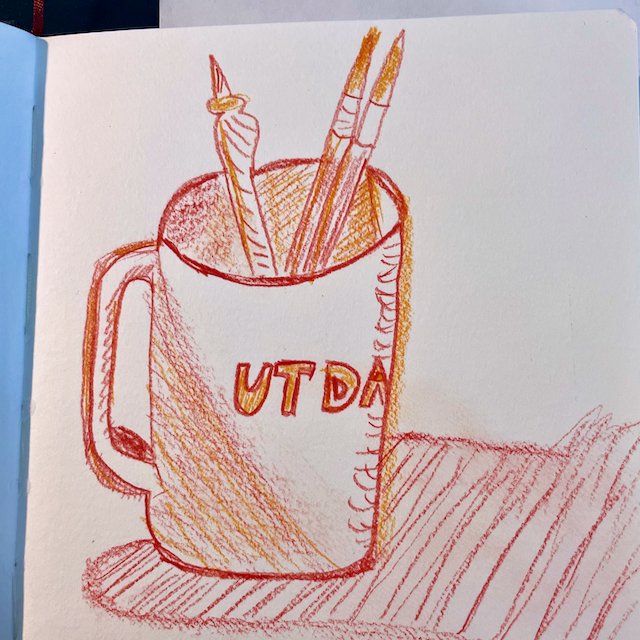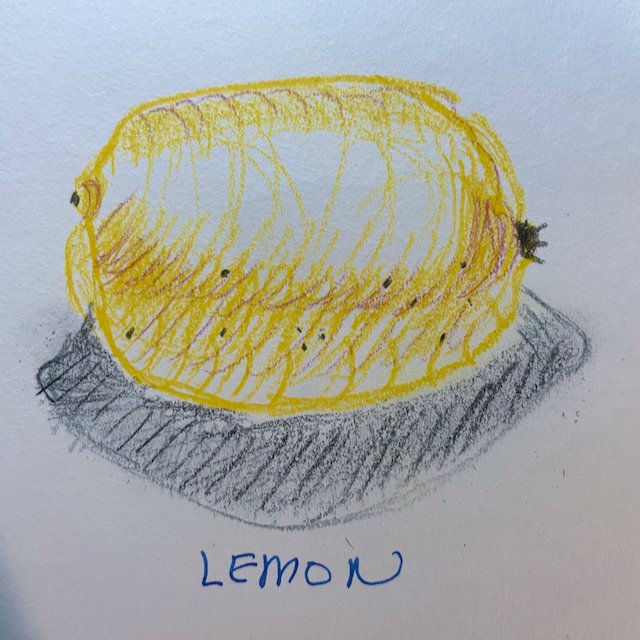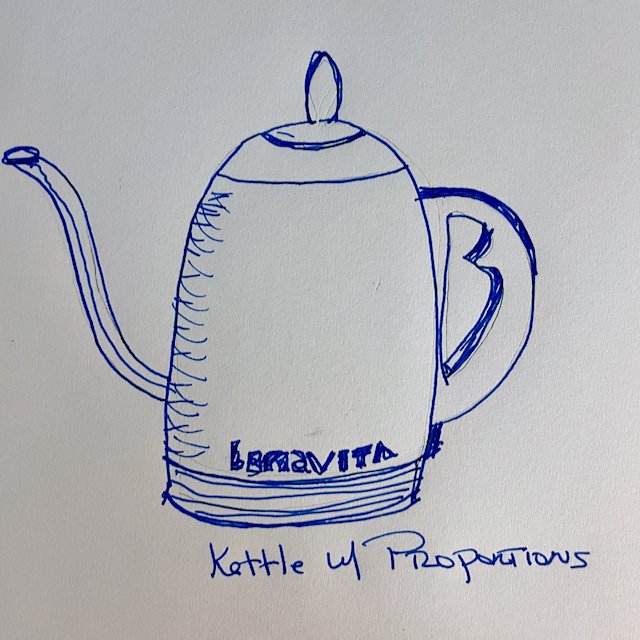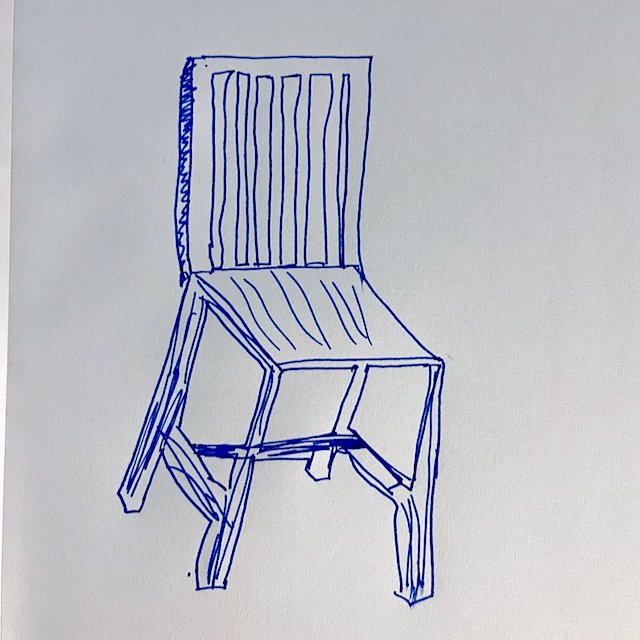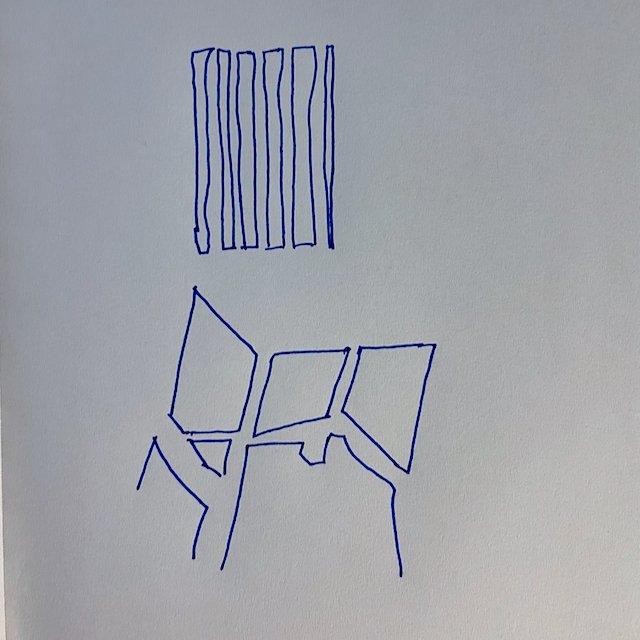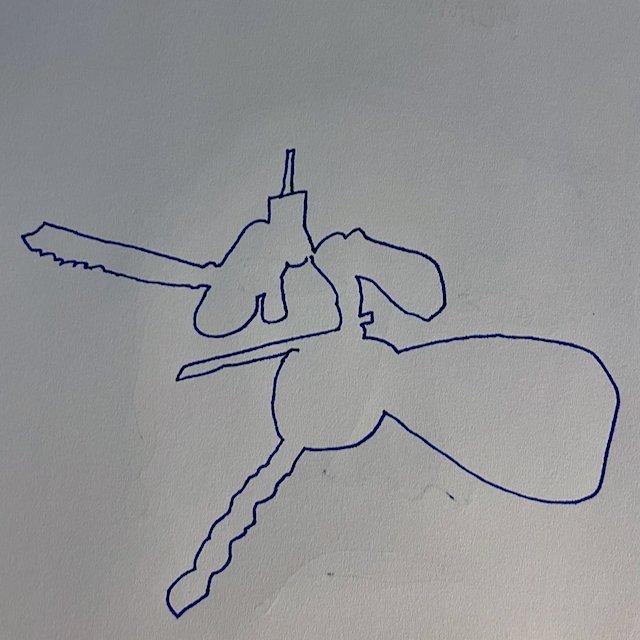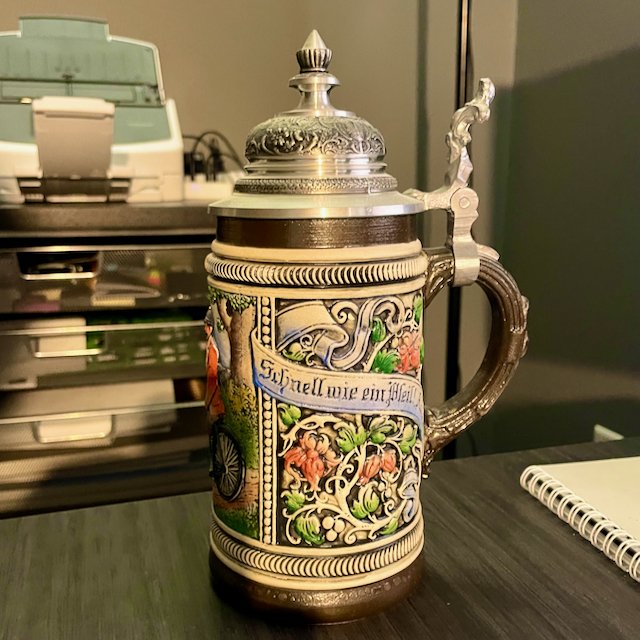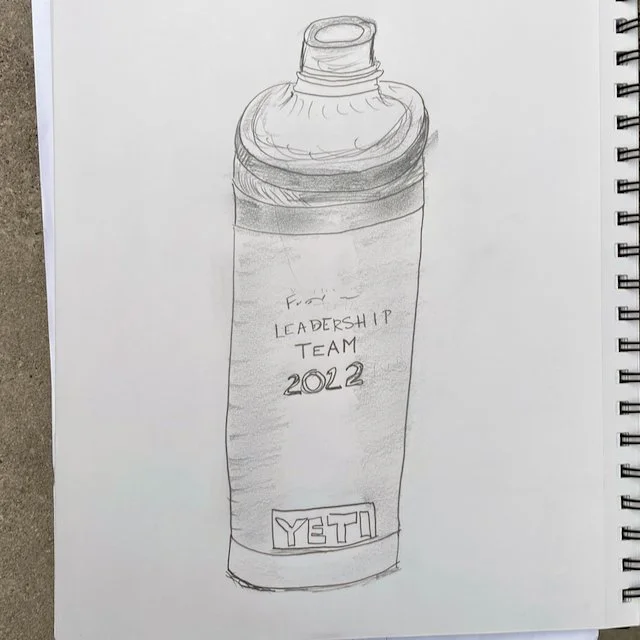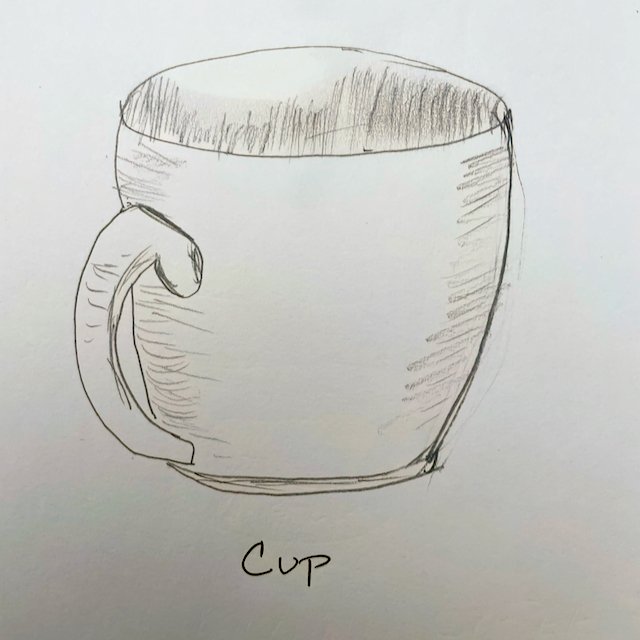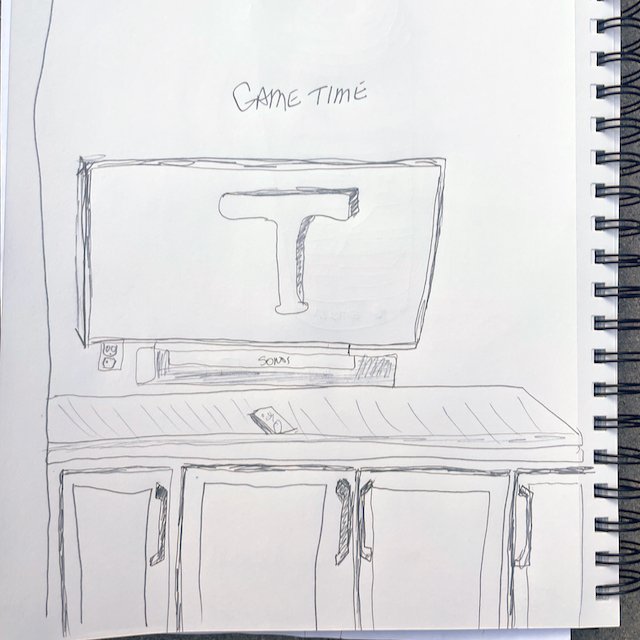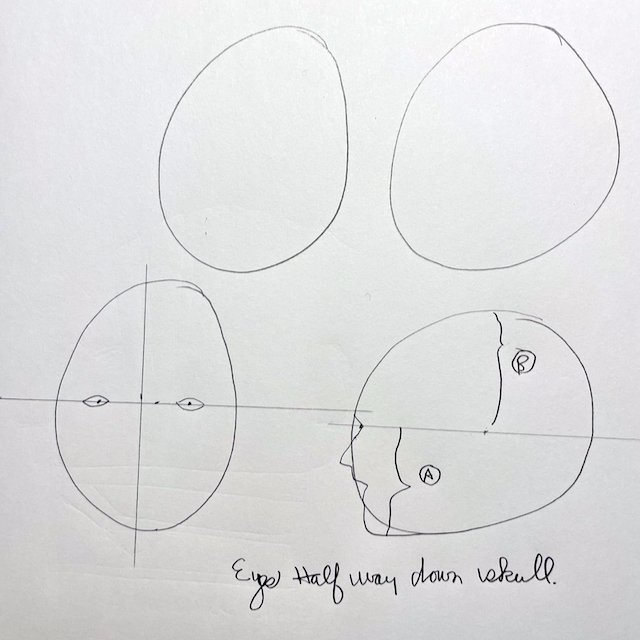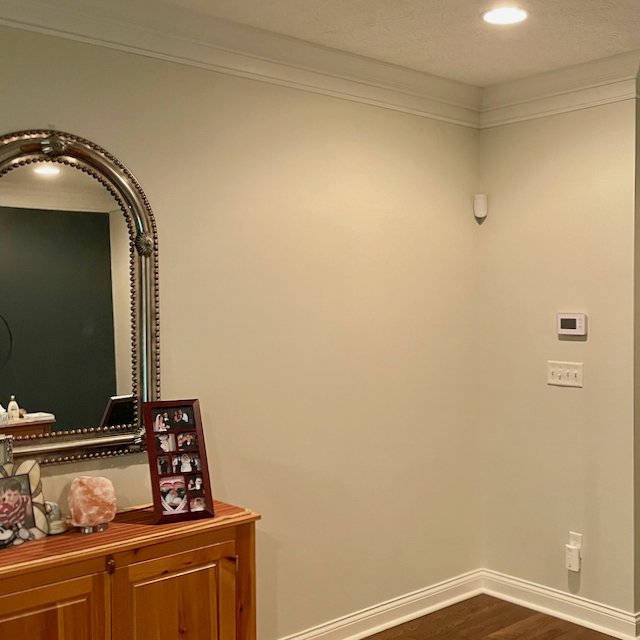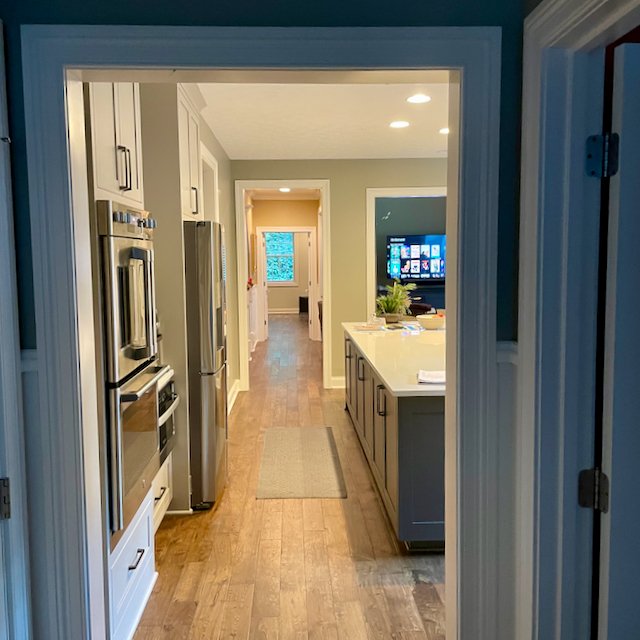Practice Needs a Purpose
Practicing drawing needs a purpose. Likewise, practicing football, baseball, and the violin requires a purpose. So before you start any practice, you need to be clear on your purpose.
Purpose lets you experience total satisfaction. When you know what you are practicing for, you have clarity when you are done that you either achieved the objective or understand what you need to do next time to complete your purpose. Either way, you get feedback.
Today's drawing focused on using colors on the same side of the color wheel to create a sketch.
Not using the "actual" colors of the object but just picking two colors to draw. I achieved that objective. This drill will allow me to think beyond the object's color and more toward a fun, exciting color pallet.
What is your purpose for doing something today?
Lemon
Colored pencils again today.
I used yellow and the complementary color purple to give the lemon structure and highlights. With the light coming from above, the highlights are strong on the top and cast a strong shadow.
Progressing
I was hesitant to draw today. I had the pressure and negative energy of failure. I was procrastinating because my drawing wouldn’t be good and would frustrate me. The opposite happened; I am one drawing closer to improving my skills. 1% improvement daily. I will improve my drawing by drawing.
What do you want to improve, but you are generating friction and procrastination?
Donald Duck
Today I drew Donald Duck.
If you follow my Instagram feed JDHayes50, you know I’ve been on a Disney Character kick. It started when we were done at Disney’s Food and Wine Festival, and the Tropical Storm came through. My wife and I were at Disney Springs and came across Learn to Draw Disney Celebrated Characters Collection book. I picked it up, thinking we would be quarantined in our room for a while.
I am enjoying the step-by-step tutorials.
A rookie question, but the step-by-step tutorial has overall shapes you draw and then refine down to the detail. So how do you remove the general shape lines to get to the final drawing? I’ve tried erasing it, but the overall shape gets out of whack.
I hope you enjoy this.
Water Kettle with Proportions
There are techniques to help with drawing subjects in proportion. Using your pen/pencil at eye level is a method to help determine ratios. For example, I used my pen to line up the kettle's total height, the spout's height, and how far the handle extends from the body.
This drawing seems to be in proportion and resembles the real thing.
Manager Vinylmation
Today’s drawing was fun. Using two pen sizes, I created my interpretation of the Manager Vinylmation. It was fantastic to free-hand the Vinylmation’s contours and then use the fountain pen to add the details.
Mix it up as you work on your drawing and art skills.
Challenge yourself and take advantage of all the tools you have
Chair – Negative Space
When you have a complicated subject to sketch, an effective technique is to draw the negative space. You focus on the open spaces and draw those rather than the intricate details of the subject—an effective way to draw on the right side of your brain and to trick your left side.
Today’s chair drawing was completed using this technique. Not perfect, as I still got caught up in the left side of my brain “telling me” what I saw. The chair leans, but I am getting better at showing perspective.
1% improvement every day.
Double Writing
Hey, my handwriting is a mess, sometimes unreadable and boring. Today’s Sketchbook Skool Art Bootcamp exercise is Double Writing from Andrea Joseph. Double writing is easy to add fun and flair to your lettering. She walks you through a four-step process to practice double writing.
Contour of the Keys
A contour drawing focuses on the edges of the object. Today’s exercise was to draw the contour of your keys without lifting your pen. The focus is on developing confident lines.
Doing it in pen, in this case, a Pilot Prera fountain pen) allows me to focus on the lines; there is no erasing or “starting over.”
After I set the contours, I went back and added the details. Excellent enjoyable exercise to start a Saturday morning.
Blind Contour by Feel
Today’s exercise was a blind contour by feel selfie. You place your finger on your nose, move around your face, and have your hand follow along. I like how my eyes are aligned and feel confident with my lines.
Another interesting exercise to develop confidence in my lines.
Blind Contour Drawing
Back to basics today.
I’m starting the Six-week Art Bootcamp class at Sketchbook Skool. This course is exciting. We start with pen and pencil on paper and work with colored pencils and watercolors.
Fun and exciting. I am looking forward to it. Today we completed a blind contour drawing. This technique is where you look at the subject only and let your hand follow your eyes.
I heard an excellent comment from author Neil Gaiman about writing in a new book, which is equally relevant to a new sketchbook. Remember, everything can be fixed except for a blank page. Draw on!
Water bottle
Here is a sketch of my personalized water bottle. It has been a while since I drew and posted something. I was thinking about where the friction has come from. As I have gone from pure novice to amateur, I have built unnecessary expectations. When you are a novice, you have no expectations and don’t self-judge what you are doing; you do it. When you arbitrarily cross over to amateur, you somehow develop expectations that lead to friction. Now I’m feeling somewhat disappointed in my drawings when I haven’t been practicing for very long.
Watch out for this arbitrary shift and the related increased expectations. The friction is not worth it.
Cup
I’m happy with the perspective on the cup’s top. I used the pencil measuring technique to measure the ellipse. The length vs. depth of the ellipse is much greater than your brain says it should be. That was key to getting the correct perspective. Today feels like a breakthrough day for me.
The overall balance of the cup’s sides is good. I am making progress one day at a time.
Morning Coffee
Here is a sketch of my morning coffee. I am still working on the perspective of the top. Still too round and doesn’t give the depth of the angle. I now realize this is my left brain telling me what I am seeing and what I should draw. Next time I need to use the picture plane to get it into a two-dimensional view.
Live Portrait Model
Drawing a two-dimensional portrait out of a book is tough, but a three-dimensional model is even more challenging.
You have the left brain interfering and dictating what you should see and draw, and your right brain trying to draw what you see. Putting all the learnings into practice is challenging. Therefore, this is a learned skill, not a God-given talent you have or don’t have.
It is tough, but I am continuing to work through it. I think I have made a 1% improvement from yesterday’s drawing to today.
Madame X
Today's drawing is day two of developing my portrait skills. Today was a warm-up exercise of drawing John Singer Sargent's Madam X. Focusing on the proportions and how the eyes, ears, and head proportions line up.
Putting aside what you see, people are even more alike than you think. There are infinite unique faces and features, but almost everyone is the same in many respects. For example, the eyes are halfway between the top of the skull and the chin, and the back of the eye to the back of the ear is the same distance as the front of the eye to the top of the head. In this crazy world, another example of what we have in common.
Learning the isosceles triangle of the head, eyes, and ears is fantastic. Progressing 1% a day.
Eyes Have It
After a break for health reasons, I am back working on and enjoying drawing. The next chapter of my Drawing on the Right Side of the Brain book course is portraits. The first section deals with proportions and precisely where the eyes fall o the skull.
Interestingly the eyes fall equidistant from the top of the head to the bottom of the chin. So even though our eyes (left brain) challenge this thought, it is accurate.
Today’s sketch is a basic shell with the axis and horizon drawn in on both the front and profile views of the head. I was getting comfortable with the placement of the eyes.
The Office Corner
Today’s sketch focuses again on the perspective skill. Using the picture plane, I drew my Basic Unit (the Formula One photography on the left of the corner) on my picture plane and then transferred that to my shaded paper.
From there, I drew the remaining elements. I’m happy with how I could draw the view to scale and didn’t run out of space on the page. Most everything in the view was captured to scale.
1% improvement!
The Corner
Today’s sketch focused on sighting the angles in a room corner with just a pencil. First, I drew the central vertical line, which always remains vertical regardless of the viewing angle. And then, using my pencil, I visually saw the angle for the floor and ceiling with the vertical corner.
Getting good and working these angles and tricking my left brain, which is convinced the lines are straight.
Focused on constant improvement day by day,
Vanishing Point down the Hallway
The vanishing point is a crucial tenant of drawing with the proper perspective. Understanding how the vanishing point works and how the straight lines converge down from above to the vanishing point and up to the vanishing point from below.
This plays havoc with your left brain because it knows these are straight lines. So forcing your left brain to give up and letting your right side brain take over and draw to the vanishing point is vital.
I have some work to do.

